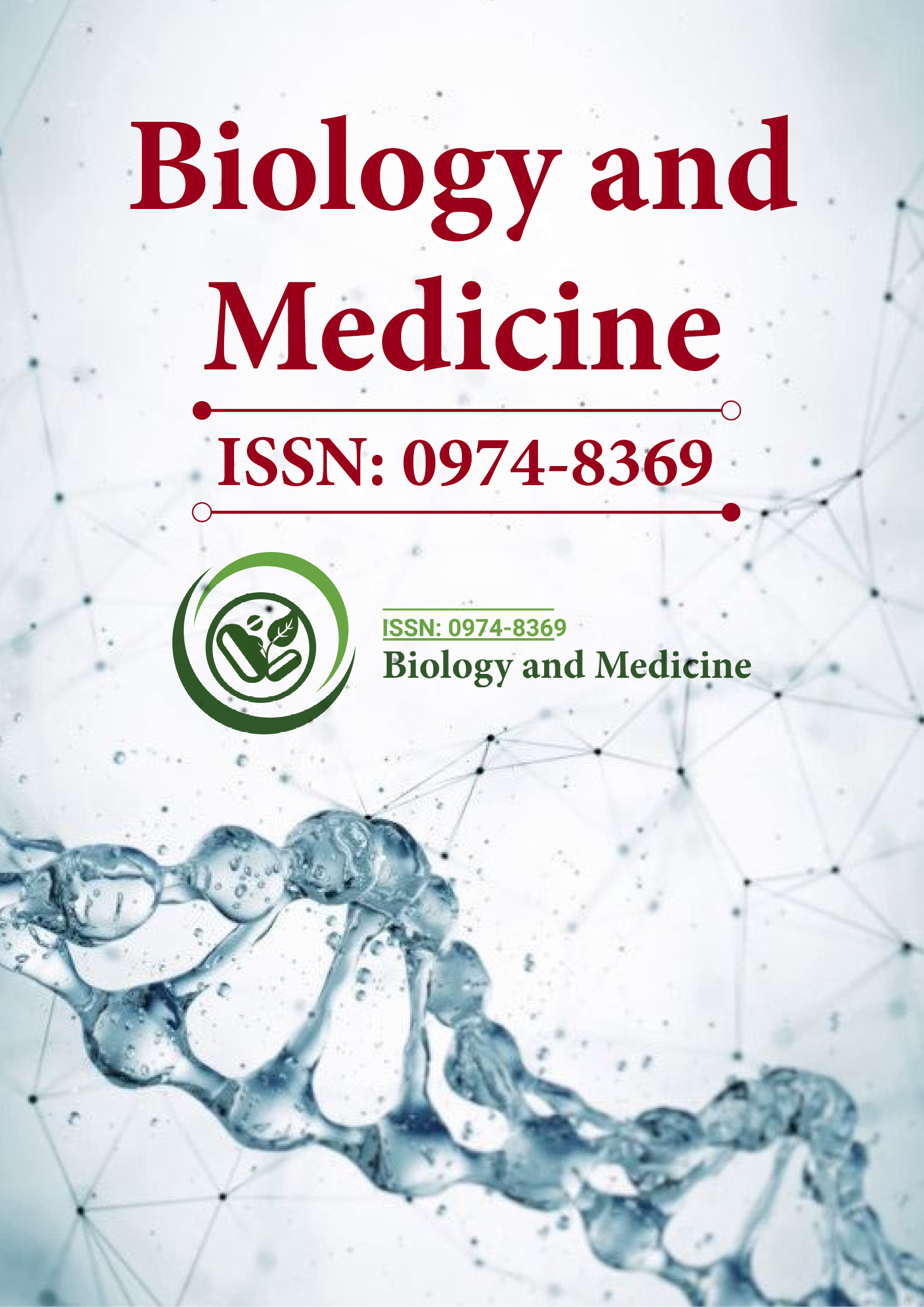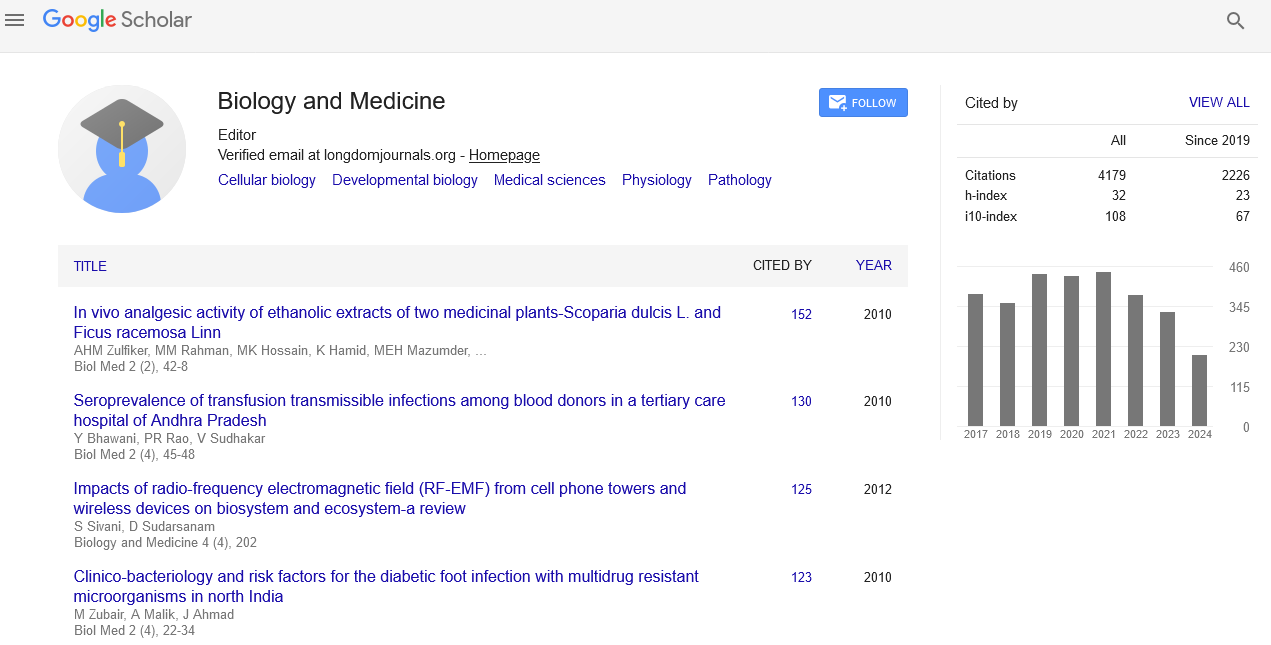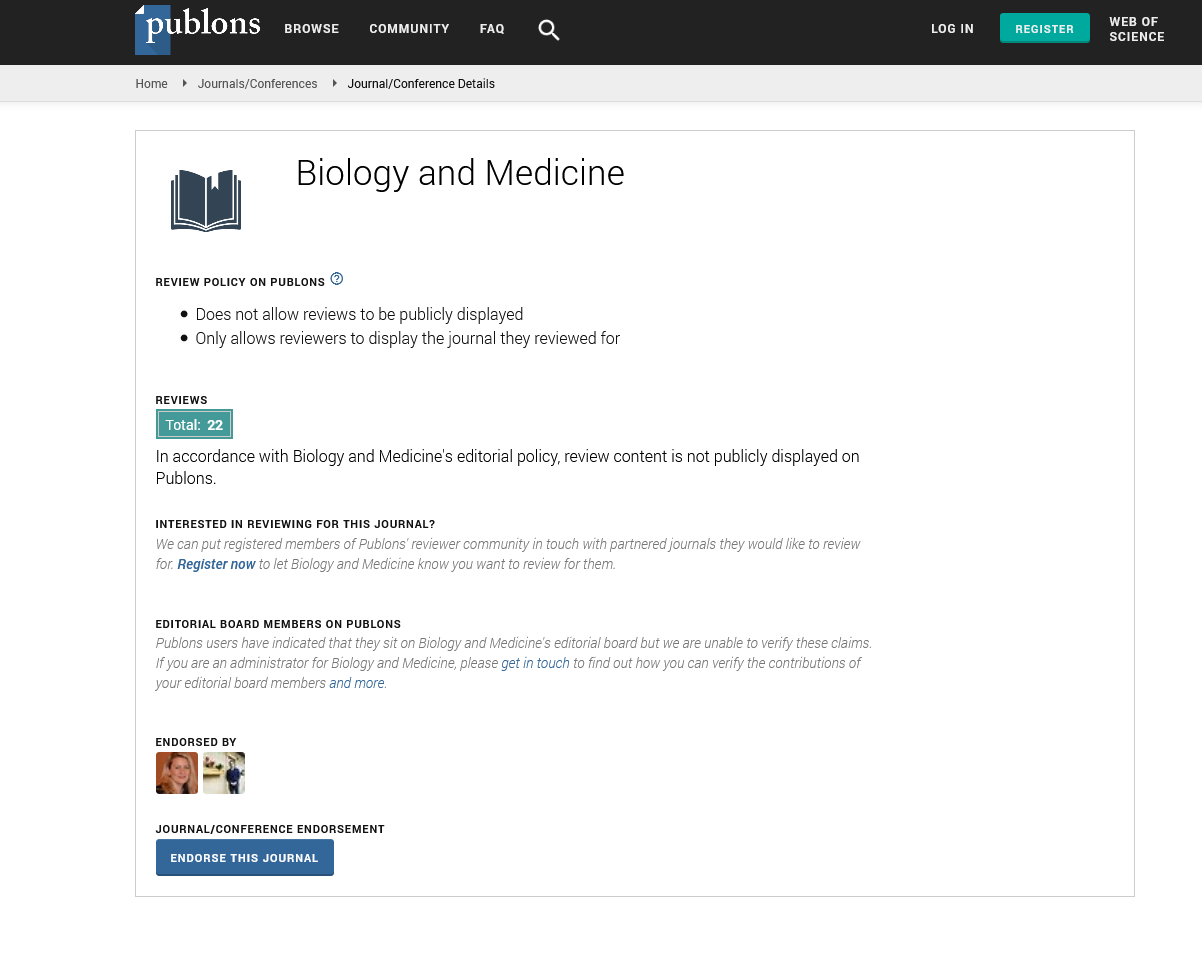Indexed In
- Open J Gate
- Genamics JournalSeek
- CiteFactor
- Cosmos IF
- Scimago
- Ulrich's Periodicals Directory
- Electronic Journals Library
- RefSeek
- Hamdard University
- EBSCO A-Z
- Directory of Abstract Indexing for Journals
- OCLC- WorldCat
- Proquest Summons
- Scholarsteer
- ROAD
- Virtual Library of Biology (vifabio)
- Publons
- Geneva Foundation for Medical Education and Research
- Google Scholar
Useful Links
Share This Page
Journal Flyer

Open Access Journals
- Agri and Aquaculture
- Biochemistry
- Bioinformatics & Systems Biology
- Business & Management
- Chemistry
- Clinical Sciences
- Engineering
- Food & Nutrition
- General Science
- Genetics & Molecular Biology
- Immunology & Microbiology
- Medical Sciences
- Neuroscience & Psychology
- Nursing & Health Care
- Pharmaceutical Sciences
Perspective - (2025) Volume 17, Issue 1
Adaptive Evolution of Microbial Populations in Response to Environmental Changes
Romy Iqbal*Received: 25-Nov-2023, Manuscript No. BLM-23-24102; Editor assigned: 28-Nov-2023, Pre QC No. BLM-23-24102 (PQ); Reviewed: 03-Dec-2023, QC No. BLM-23-24102; Revised: 09-Jan-2025, Manuscript No. BLM-23-24102 (R); Published: 16-Jan-2025, DOI: 10.35248/0974-8369.25.17.765
Introduction
Microbial populations are remarkable in their ability to adapt and thrive in diverse environments, displaying a level of evolutionary flexibility that is essential for their survival. This essay explores the concept of adaptive evolution in microbial populations, focusing on how these tiny organisms undergo genetic changes in response to environmental challenges. Understanding the mechanisms behind this adaptive evolution not only sheds light on microbial diversity but also has implications for fields such as medicine, biotechnology, and environmental science.
Description
Microbes inhabit a vast array of environments, from extreme conditions like high temperatures and acidity to more stable niches like soil and water. The ability of microbial populations to adapt to changes in their surroundings is crucial for their persistence and dominance in various ecosystems. Environmental challenges such as temperature fluctuations, nutrient availability and the presence of toxins exert selective pressures that drive adaptive evolution.
At the heart of microbial adaptation is genetic variation. Microbial populations have high mutation rates and the accumulation of genetic diversity provides the raw material for adaptive evolution. Mutations can be spontaneous or induced by environmental factors, leading to changes in the genetic code that may confer advantages in specific conditions. Beneficial mutations that enhance survival and reproduction are more likely to be retained in the population through natural selection. Environmental changes act as selective pressures that shape the genetic composition of microbial populations. Microbes with genetic variations better suited to the altered conditions have a higher likelihood of survival and reproduction, contributing to the concept of natural selection.
Environmental changes act as selective pressures that shape the genetic composition of microbial populations. Microbes with genetic variations better suited to the altered conditions have a higher likelihood of survival and reproduction, contributing to the concept of natural selection. Over time, the prevalence of advantageous traits increases within the population, reflecting the adaptive response to the specific environmental challenges.
Microbial populations are known for their rapid generation times, allowing for quick turnover and adaptation to changing conditions. This rapid evolution is particularly evident in the context of antibiotic resistance. The overuse of antibiotics exerts selective pressure on bacterial populations, leading to the emergence of resistant strains through natural selection. This rapid adaptation poses challenges in the medical field, highlighting the need for prudent use of antibiotics.
In addition to mutations and natural selection, Horizontal Gene Transfer (HGT) plays a significant role in microbial adaptation. Microbes can exchange genetic material directly with neighboring cells, allowing for the acquisition of beneficial traits without the need for traditional reproduction. This mechanism accelerates the spread of adaptive genes within a microbial community and contributes to the overall genomic plasticity of microbial populations.
Conclusion
Adaptive evolution in microbes often involves trade-offs, where the acquisition of one advantageous trait may come at the cost of another. For example, a bacterium evolving resistance to a particular toxin may experience a decrease in its overall fitness in the absence of that toxin. Understanding these trade-offs is crucial for predicting the long-term dynamics of microbial populations and their responses to environmental changes.
The adaptive evolution of microbial populations has practical implications in various biotechnological applications. Industrial processes, such as biofuel production and waste remediation, often involve microbial organisms that can be engineered for enhanced performance. Harnessing the adaptive potential of microbes through directed evolution and selective breeding holds promise for optimizing microbial strains for specific biotechnological goals.
The adaptive evolution of microbial populations in response to environmental changes is a fascinating and dynamic process that underscores the resilience and versatility of these organisms.
From the microbial communities in our gut to those inhabiting extreme environments, the ability to adapt rapidly to changing conditions is a testament to the intricate interplay between genetics, natural selection, and environmental pressures. As we delve deeper into the molecular mechanisms driving microbial adaptation, we gain not only a better understanding of microbial diversity but also insights that can inform strategies for addressing challenges in medicine, biotechnology, and environmental management.
Citation: Iqbal R (2025) Adaptive Evolution of Microbial Populations in Response to Environmental Changes. Bio Med. 17:765.
Copyright: © 2025 Iqbal R. This is an open-access article distributed under the terms of the Creative Commons Attribution License, which permits unrestricted use, distribution, and reproduction in any medium, provided the original author and source are credited.


